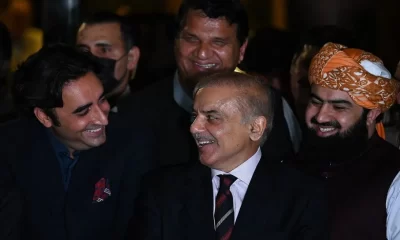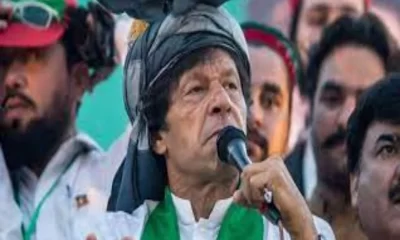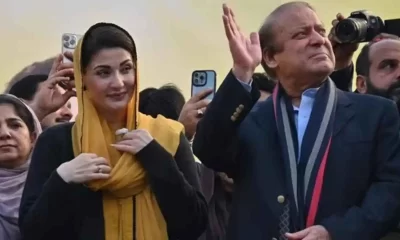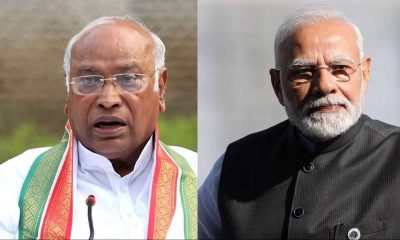Latest world news
Should Journalists Protect National Interest Or Publish And Be Damned?

By Saeed Naqvi
Pakistan Prime Minister Nawaz Sharif’s fate hangs in the balance on unexplained finances, most specifically for apartments he acquired on London’s most expensive stretch, Park Lane, facing Hyde Park. I visited the most prized of these apartments on October 15, 1999, days after Gen. Pervez Musharraf ousted him in a coup on October 12.
To make sense of the military handouts explaining the situation, I turned up in London to interview his youngest son, Hasan then 23, who, I presumed would have been in touch with members of his family in Islamabad and Lahore.
What struck me and my camera crew were the rich, opulent interiors, heavy curtains one would expect at the Savoy and the Dorchester, sofas with upholstery so expensive as to hover between class and vulgarity. The deep corridors lead to many bedrooms, one of which Hasan occupied even when he was at London University. To elevate the grand style of the Sharifs was a butler in attendance, wearing tails of impeccable cut, as if he were off to the Ascot races.
My interview with Hasan was about the coup and its aftermath, but as the 118 Park Lane acquired saliency in the current corruption saga, I looked at the video again from the angle of “ill-gotten wealth”. There was plenty of it in the footage.
A thought crossed my mind: it might be of interest to TV channels in Pakistan.
Immediately, my hand was stayed by a left-liberal friend in the media.
“This footage will weaken civil society which is suspicious of Imran Khan’s collusion with the army.”
Two schools of journalism were suddenly in conflict. Should Nawaz Sharif’s alleged corruption be overlooked because protecting him against Imran Khan served some higher purpose? Publish and be damned is what I had been taught when confronted with such situations.
Another story, ironically this one concerning Imran Khan, comes to mind.
I had turned up in Israel, to interview Prime Minister Yitzhak Shamir totally against the advice of my left-liberal friends – Prof. Mushirul Hasan, for instance. Muslim Congressmen surrounding Rajiv Gandhi were advising him against upgrading relations with Israel “because the Muslim vote would be adversely affected.” This, I wrote, was rubbish. Salman Rushdie, Shah Bano, Babari Masjid and relations with Israel were not life and death issues for Indian Muslims. Education, entrepreneurial help, jobs were the substantive issue. It was this argument I had armed myself with for my journey to Jerusalem. We would be that much more influential on the Palestinian issue I had argued.
Linda, the Press Secretary to Shamir showed me a list of “Pakistanis who claimed to have been sent by Imran Khan to explore relations with the Jewish state”. Remember Jemima was married to Imran and her multi billionaire father, Sir James Goldsmith wielded great influence in Jerusalem. I did not write that story because Imran then was much more a cricketer than politician. Moreover, Linda had shared this information in confidence on a personal basis.
When Benazir Bhutto sought a conversation with Israeli President Ezer Weizman during Nelson Mandela’s inauguration in Pretoria in 1994, I did mention the fact. She was a Prime Minister, trying to connect with Israel clandestinely.
When the Janata government under Morarji Desai encouraged Bhutan to open up gradually in international affairs, south block was split on the pace of this openness. At this juncture the successor government of Prime Minister Charan Singh, hurriedly invited Shyam Nandan Mishra, the MP from Bihar, to attend the Non Aligned Summit in Havana in September 1979 as the new External Affairs Minister. A novice in world affairs, Mishra put his foot in his mouth on a secret treaty which guides Indo-Bhutan relations.
So cross was King Jigme Singye Wangchuk that he invited me to Mumbai where he was halting on his journey from Havana. This was most unprecedented. No king of Bhutan had ever given an interview to a journalist.
The interview, published behind the back of the establishment, created a sensation. The hawks in South Block were angry because I had provided a forum to the King to vent his anger on a very sensitive issue which may give a handle to China. In those days also “grazing grounds” between Bhutan and China were an issue. Head of Bhutan’s Geological Survey, Sonam Ragbey, was in and out of New Delhi with maps. It was all very hush, hush.
The dilemma facing me then was: should I have anticipated the Indian hawks and, posing as a protector of the national interest, killed the story? Or should I abide by the old dictum: publish and be dammed?
I took the latter route.
A quest for balance on International Affairs in the Indian media has always been a fool’s errand. The Imperial-colonial stranglehold obtains to this day. When Ronald Reagan bombed Bengazi and Tripoli in April 1986 because US intelligence had picked up chatter in a Berlin discotheque that Libyan terrorists were about to target Western locations, the story was either not noticed in India or the western version was wallowed hook line and sinker.
When I turned up in Tripoli to interview Qaddafi whose six month old daughter had been killed in the air raid on his Palace, I was regarded as a subversive, blackleg by the western press corps. I still remember a disapproving Kate Aide of the BBC in the hotel room opposite mine.
The entire anti Qaddafi propaganda was based on falsehoods. Should I go along with the powerful conventional wisdom forged globally or puncture it since I had witnessed the incontrovertible truth?
The interview made banner headlines in European newspapers like La Republica, but I also lived to see how powerful the western lobbies were on that solitary event.
Prime Minister Rajiv Gandhi, who had dispatched his external affairs minister, Bali Ram Bhagat to commiserate with Qaddafi in Tripoli, came under such heavy pressure from the Reagan White House, that he was obliged to make Bhagat the scapegoat. He was sacked.
It was clear as daylight once again that in situations like this, whatever the official line, the only principle a journalist with spine must abide by is, “publish and be damned”.
Latest world news
World Earth Day 2024: Google Doodle showcases aerial view of planet’s natural beauty
Google celebrated Earth Day 2024 with a special doodle featuring an aerial view of our planet’s biodiversity.
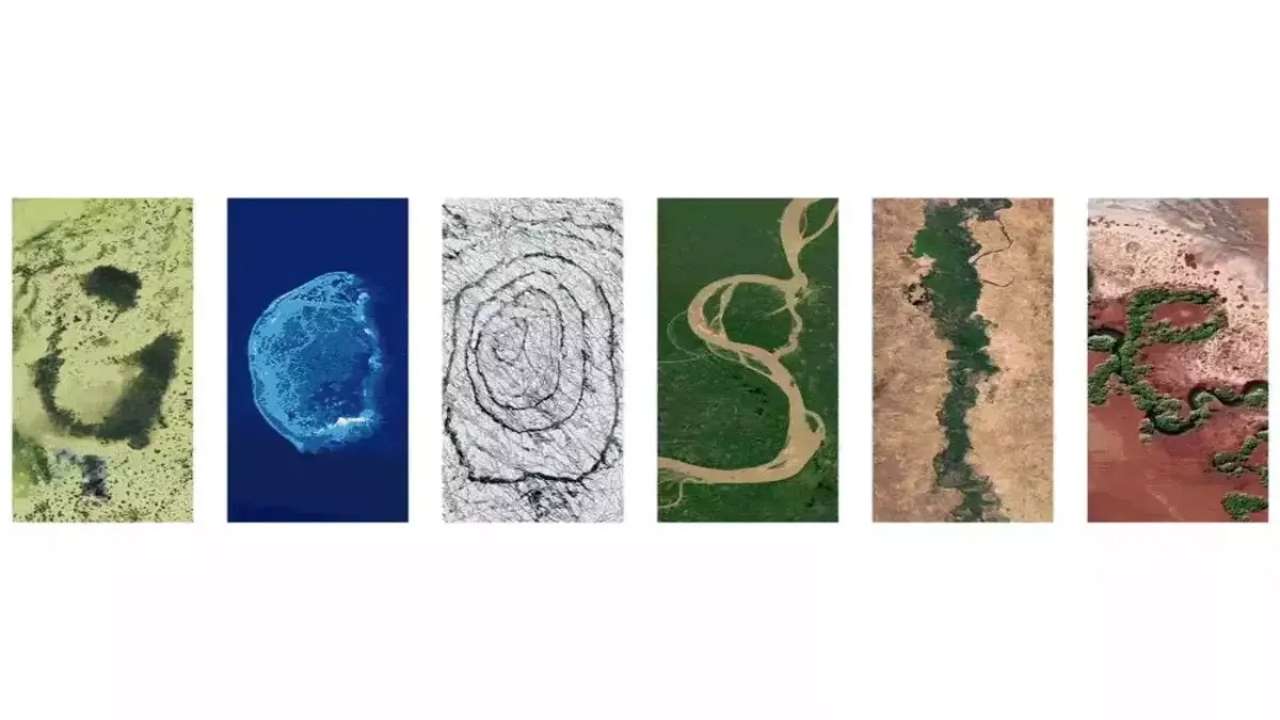
Google shared a doodle today to celebrate World Earth Day 2024, which showcased aerial photos of the planet’s biodiversity and natural beauty. Google reminded us of the importance of protecting planet earth for future generations with the help of this doodle.
The Google letters depict specific locations across the globe where people, communities, and governments work every day to help protect the planet’s natural beauty, biodiversity, and resources, according to the explanation of the annual Earth Day 2024 doodle on their website.
It said, these examples remind us that there’s much more to do to address the climate crisis and biodiversity loss, but also offer the promise of hope and optimism.
The islands of Turks and Caicos are represented by the letter “G.” The islands’ conservation efforts are concentrated on protecting important regions for biodiversity and addressing persistent environmental problems.
The largest reef in the southern Gulf of Mexico and a UNESCO biosphere reserve, Scorpion Reef National Park, is represented by the letter “O” in the Mexican flag.
The letter “O” features Iceland’s Vatnajokull National Park, which was designated as a national park in 2008 following decades of advocacy. The ecology within and surrounding the biggest glacier in Europe is safeguarded by this UNESCO World Heritage Site.
The letter “G” has the Jau National Park in Brazil on it. It is a UNESCO World Heritage Site and one of the biggest forest reserves in South America.
The Great Green Wall of Nigeria is represented by the letter “L,” and the Pilbara Islands Nature Reserves of Australia are represented by the letter “E.”
Meanwhile, Earth Day is a worldwide event that promotes protection of the environment every year. April 22 serves as a reminder of the importance of conservation efforts and sustainable practices to guarantee a healthier world and a brighter future.
The occasion inspires people across the world to come together and take action to protect the environment, strengthening our bonds with nature and promoting good change.
Latest world news
Bigg Boss 14 contestant Rahul Vaidya struggles walking in knee deep water, compares Dubai rains with Mumbai floods
Singer and TV personality Rahul Vaidya was recently stranded in the Dubai rains.
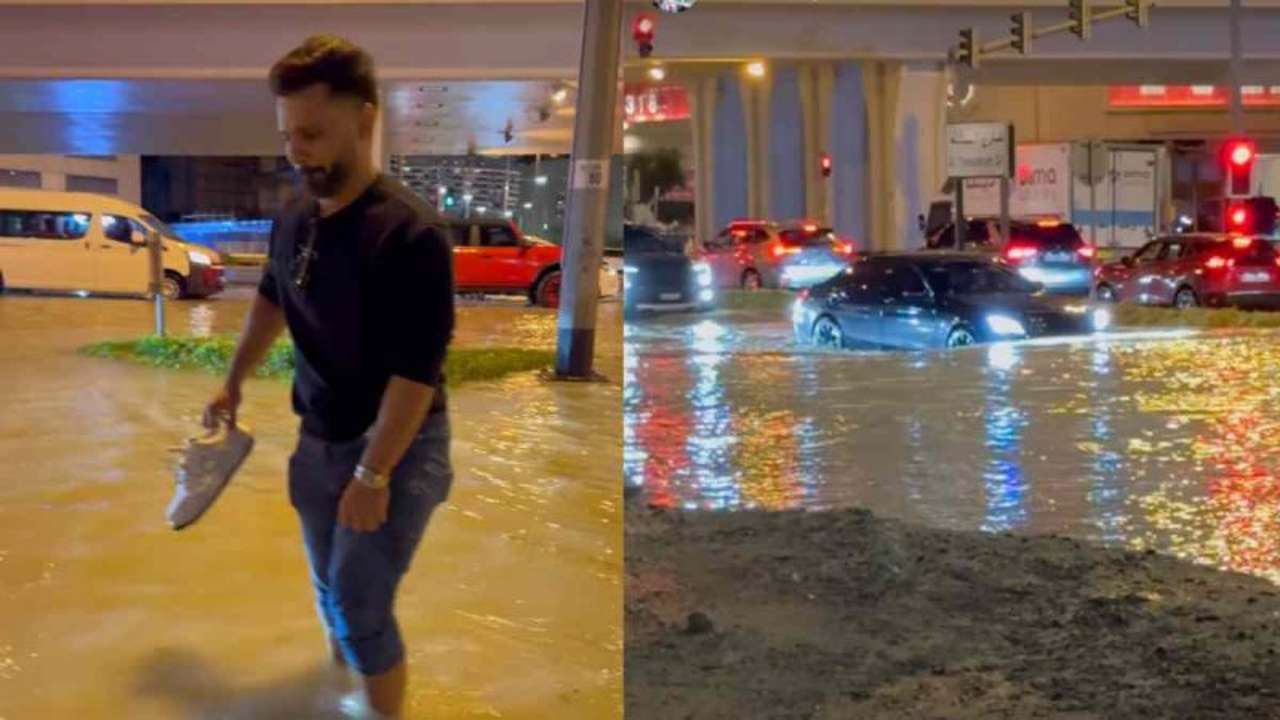
Rahul Vaidya, who was in Dubai ahead of his show which was scheduled to take place today, left the country due to heavy rains and reached Kolkata. The artist shared on social media his encounters in the UAE city, including challenges like walking through knee-deep water. Rahul provided an update regarding the heavy rainfall in Dubai on his Instagram profile.
The Bigg Boss 14 contestant revealed that he was in Kolkata and prepared to do an evening performance. Recalling the terrifying period he went through, Vaidya said there was a lot of confusion and panic in Dubai. The situation was similar to that when heavy floods hit Mumbai in 2005.
Vaiday also posted seval other images and videos of cars that were underwater and flooded roadways. The Bigg Boss 14 contestant, who shared his ordeal, claimed that even though it had just rained for two hours, the situation was dire.
In one of the video, which went viral he can be seen struggling in walking in knee-deep water. He can be also seen holding his sneakers in one hand and with other hand he was seen managing other things.
This is the result of the two hours of rain that it had, he can be heard saying in the video. Vidya also said he dosen’t believe Dubai is accustomed to a lot of rain. Everything had stopped working, he remarked.
After taking part in the first season of the singing reality show Indian Idol, Rahul Vaidya gained widespread recognition. In addition to Bigg Boss, he took part in Khatron Ke Khiladi 11.
Meanwhile, heavy rains that triggered flooding in the UAE and Bahrain, which left 18 people dead in Oman on Sunday and Monday, have paralyzed the financial hub of the Middle East, Dubai.
A lot of incoming flights were diverted from Dubai’s international airport because of the rain. At 7:26 p.m., the busiest airport in the world for foreign visitors stopped accepting new arrivals; a gradual resumption was announced for more than two hours later.
Images of planes navigating flooded tarmacs are making the rounds on social media.
According to pictures shared on social media, the flagship malls Dubai Mall and Mall of the Emirates both experienced heavy floods, while at least one Dubai Metro station had water up to the ankles.
There were several road collapses, severe flooding in residential areas, and numerous reports of leaks from windows, doors, and roofs.
Due to the unfavourable weather, schools around the United Arab Emirates were forced to close, and as more storms are predicted, the closures are anticipated to last until Wednesday. The government of Dubai allowed its staff to work remotely till this Wednesday.
Latest world news
Dubai sky turns green during storm in UAE, video goes viral
The UAE witnessed record-breaking rainfall on Tuesday and the National Centre of Meteorology recorded 254 mm of rainfall in less than 24 hrs in the Khatm Al Shakla area in Al Ain.
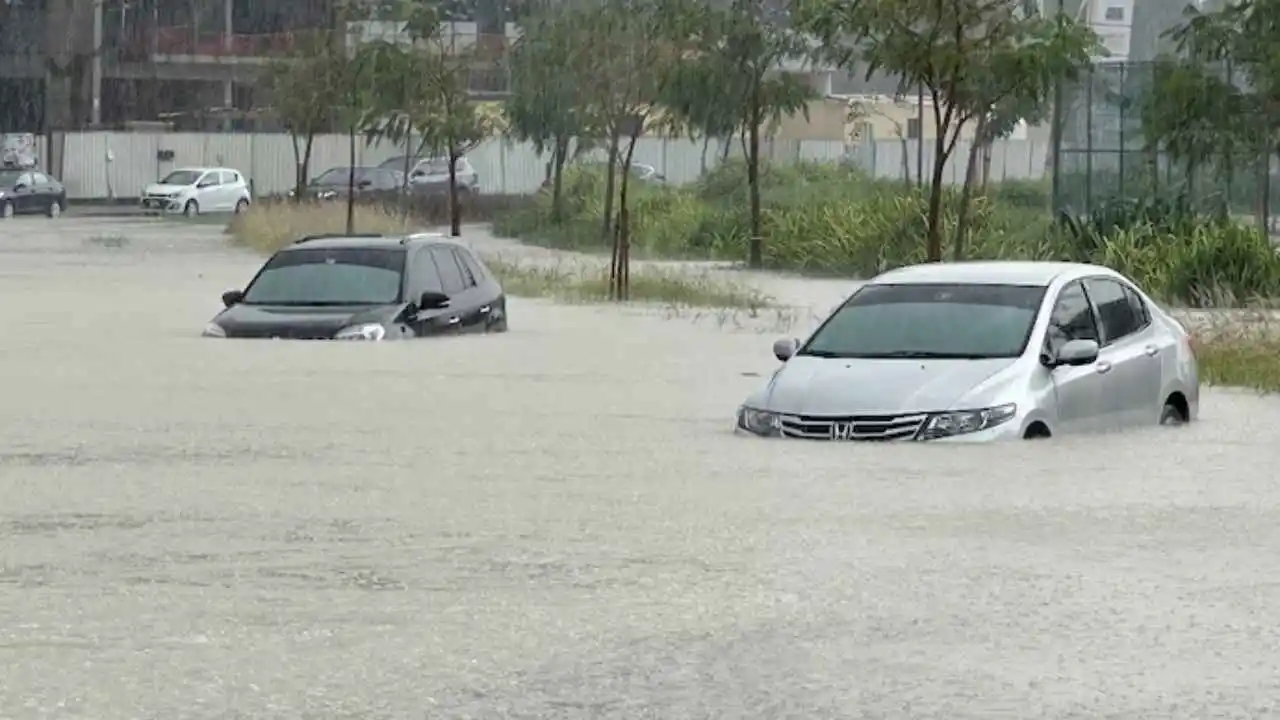
1 person was killed in UAE as it witnessed heavy rainfall on Tuesday, stranding commuters, flooding roads, disrupting trains and flights and resulting in water leakage from mall ceilings. The UAE witnessed record-breaking rainfall on Tuesday and the National Centre of Meteorology recorded 254 mm of rainfall in less than 24 hrs in the Khatm Al Shakla area in Al Ain. It is being said that the rainfall was the highest documented since the start of data collection in 1949.
The heavy rainfall in UAE came days after a similar situation in neighbouring Oman, where 13 people were killed in flash floods. Many parts of Oman saw torrential rains, which caused students to be trapped in buses and swept away motorists and trapped people in their homes.
Videos from Dubai circulating on social media showed widespread waterlogging on roads in Abu Dhabi, Dubai and other important cities. This left daily commuters in cars and other vehicles struggling to get back home. Dubai metro station too was seen flooded and closed.
One such video circulating on social media shows the aerial view of the city of Dubai from the top of a building. In the video the stormy winds are seen blowing over the city of Dubai. As the storm intensifies the Dubai sky turns green and ultimately gets covered by heavy rainfall. The video has gone viral on social media with more than 1.1 million views.
Another video showed water leakage from the ceilings of shopping malls, flooding the floors and destroying goods. A video which was shot in the famous Mall of the Emirates, showed pieces of ceiling falling as the rainwater gushed inside. Videos from many outlets of the Deira City Centre mall chain showed escalators being rendered unusable. Majid Al Futtaim, the company which owns the Mall of Emirates, said that the shopping complexes have been kept open and the customers are being sent away from the flooded areas.
-
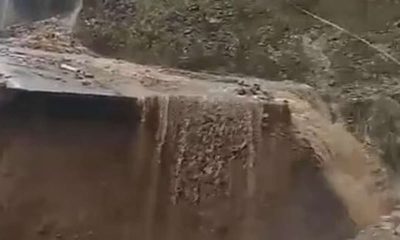
 India News8 hours ago
India News8 hours agoLandslide hits Arunachal Pradesh, highway linking Indo-China border affected
-

 Education7 hours ago
Education7 hours agoFarmer’s son Nilkrishna Gajare Nirmalkumar from Maharashtra scores 100 NTA score in IIT-JEE Mains 2024
-

 Entertainment8 hours ago
Entertainment8 hours agoBollywood stars Salman Khan, Alia Bhatt, Rekha, Sonakshi Sinha, Aditi Rao Hydari attend Sanjay Leela Bhansali’s Heeramandi premiere
-

 India News9 hours ago
India News9 hours agoTamannaah Bhatia summoned in illegal IPL streaming app case, to appear before cyber cell on April 29
-

 2024 Lok Sabha Elections8 hours ago
2024 Lok Sabha Elections8 hours agoBihar: Election Commission extends voting timings for 4 Lok Sabha seats due to heatwave
-
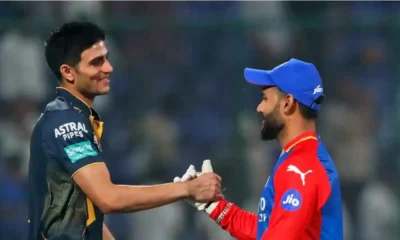
 Cricket news9 hours ago
Cricket news9 hours agoIPL 2024: Rishabh Pant, Axar Patel score half centuries as Delhi Capitals beat Gujarat Titans by 4 runs
-

 Cricket news2 hours ago
Cricket news2 hours agoTelugu superstar Mahesh Babu meets SRH captain Pat Cummins, says it is an absolute honour
-
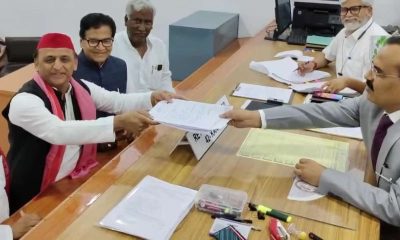
 2024 Lok Sabha Elections7 hours ago
2024 Lok Sabha Elections7 hours agoLok Sabha elections: Samajwadi Party chief Akhilesh Yadav files nomination from Kannauj

